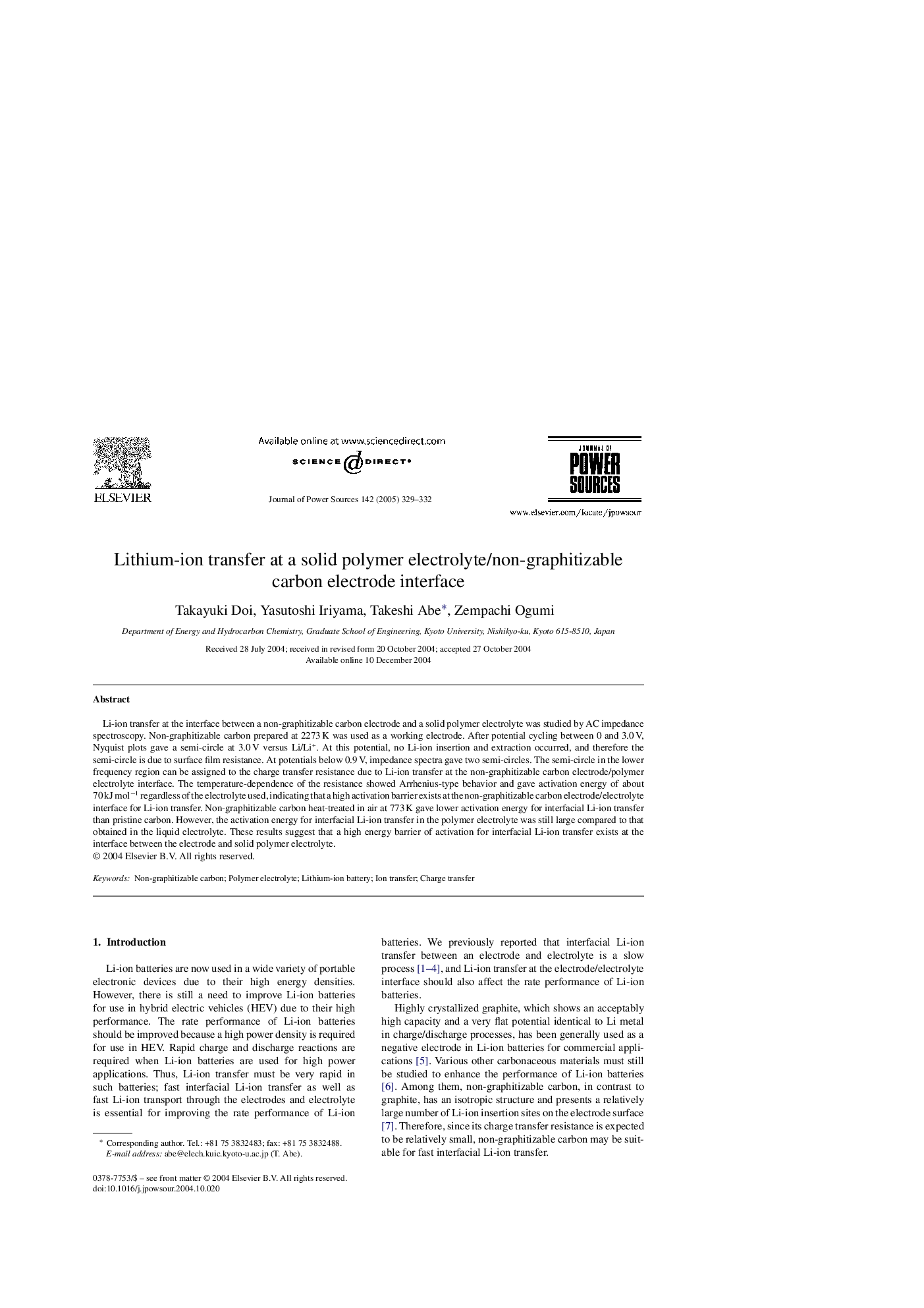| Article ID | Journal | Published Year | Pages | File Type |
|---|---|---|---|---|
| 9760447 | Journal of Power Sources | 2005 | 4 Pages |
Abstract
Li-ion transfer at the interface between a non-graphitizable carbon electrode and a solid polymer electrolyte was studied by AC impedance spectroscopy. Non-graphitizable carbon prepared at 2273Â K was used as a working electrode. After potential cycling between 0 and 3.0Â V, Nyquist plots gave a semi-circle at 3.0Â V versus Li/Li+. At this potential, no Li-ion insertion and extraction occurred, and therefore the semi-circle is due to surface film resistance. At potentials below 0.9Â V, impedance spectra gave two semi-circles. The semi-circle in the lower frequency region can be assigned to the charge transfer resistance due to Li-ion transfer at the non-graphitizable carbon electrode/polymer electrolyte interface. The temperature-dependence of the resistance showed Arrhenius-type behavior and gave activation energy of about 70Â kJÂ molâ1 regardless of the electrolyte used, indicating that a high activation barrier exists at the non-graphitizable carbon electrode/electrolyte interface for Li-ion transfer. Non-graphitizable carbon heat-treated in air at 773Â K gave lower activation energy for interfacial Li-ion transfer than pristine carbon. However, the activation energy for interfacial Li-ion transfer in the polymer electrolyte was still large compared to that obtained in the liquid electrolyte. These results suggest that a high energy barrier of activation for interfacial Li-ion transfer exists at the interface between the electrode and solid polymer electrolyte.
Related Topics
Physical Sciences and Engineering
Chemistry
Electrochemistry
Authors
Takayuki Doi, Yasutoshi Iriyama, Takeshi Abe, Zempachi Ogumi,
